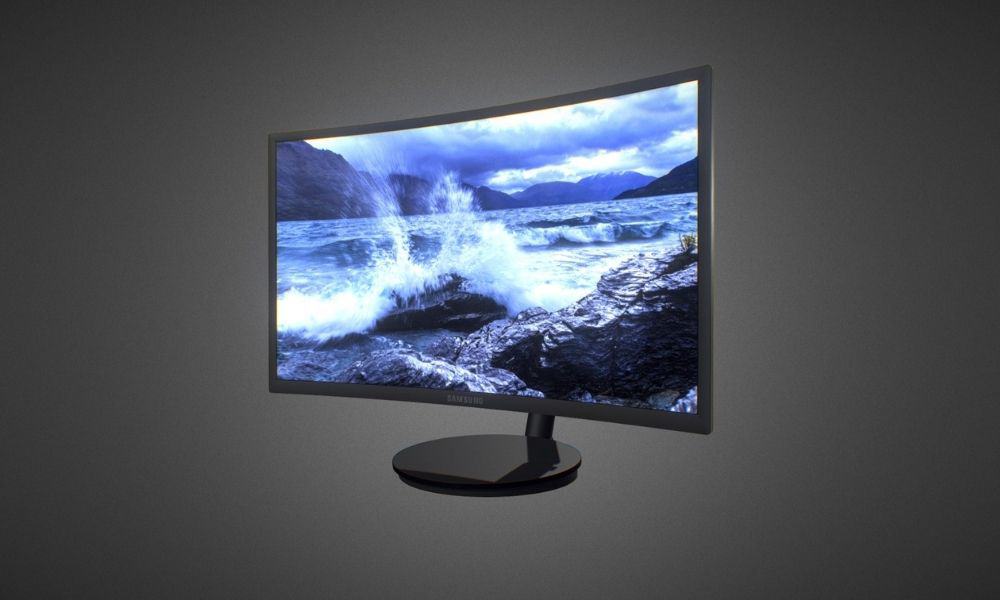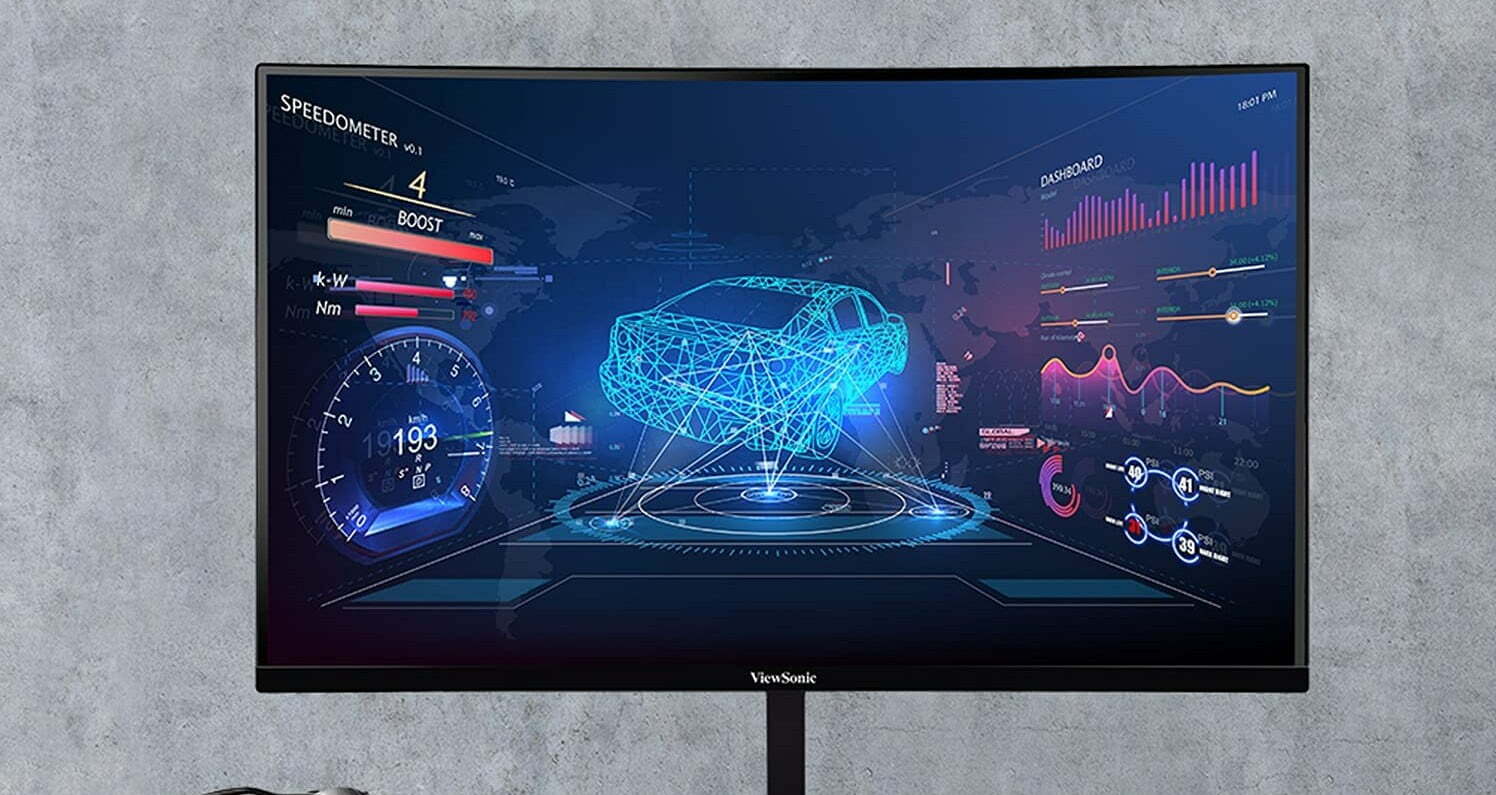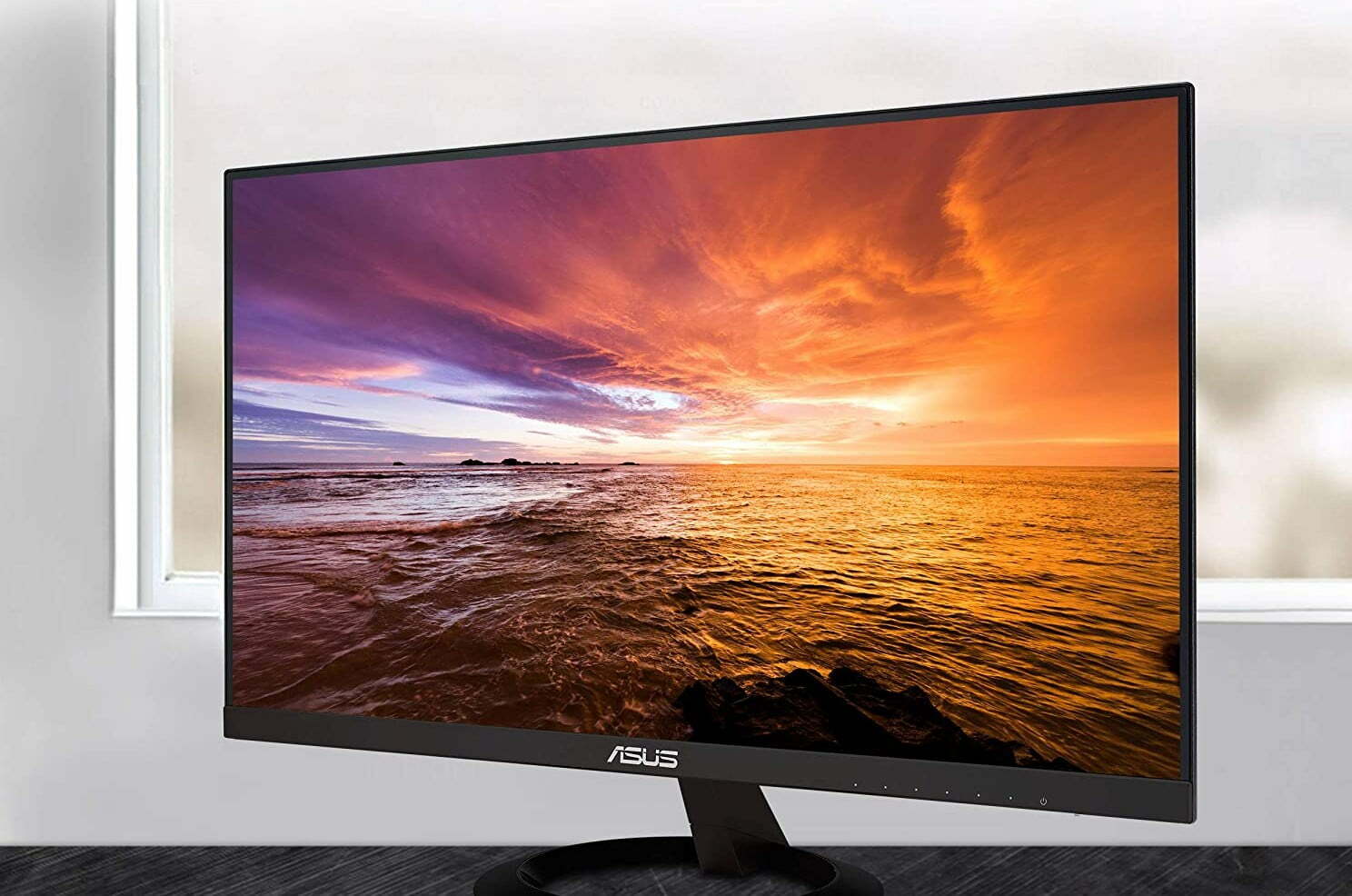Key Takeaways:
- There are 3 main types of 3D monitors: active, passive, and glasses-free
- Glasses-free 3D monitors tend to be used solely for commercial purposes
- Passive 3D monitors are ideal for people that don’t want to upgrade their graphics cards
It seems like technology is always innovating and finding better ways to create the gadgets and gear we use regularly. And the same can be said for computer displays, that is, if you already know what a monitor is in regards to a whole PC desktop setup. Once relegated to CTR monitors, we now have a wide array of options ranging from traditional LCDs to more impressive OLEDs. But now, there’s even the option to use a 3D computer monitor. But aside from gaming or immersive entertainment content, who else could benefit from this technology?
What are 3D Monitors?
As their title suggests, 3D monitors are designed to support three-dimensional aspects when you need them. Depending on what you’re looking at, this means that you’ll get to enjoy content that has far more depth than you would with a traditional computer monitor screen. But the technology is by no means new. And this means that there are several options available to consumers who are thinking about upgrading to a 3D monitor.
Before you upgrade to a 3D monitor, it’s a good idea to check out the warranty and what it covers. For more info, see our resource article on the top computer warranty.
Related Posts:
Types of 3D Monitors
There are three types of 3D monitors that consumers can purchase — active, passive, and glasses-free. Depending on your preference, and specific functions and uses of a computer monitor, there are pros and cons for each.
Passive 3D Monitors
Passive 3D monitors work pretty much like you would expect 3D technology to behave. When you wear a pair of specialized glasses and view content on the screen, you’ll see in-depth. Typically, 3D monitors come with at least one or two pairs of these glasses.
In terms of affordability, passive 3D monitors are the least expensive option if you want a 3D monitor but don’t want to pay high prices. More importantly, if you’re thinking about this upgrade, they don’t require a specialized graphics card to work properly since the monitor is engineered to do that heavy lifting.
However, one of the biggest negatives of passive 3D monitors is the image quality. Specifically, the glasses required to view content can make images appear dimmer. While this might not be a dealbreaker for everyone, people who are particular about image quality may not like it.
Warning: the glasses required to view content can make images appear dimmer
Active 3D Monitors
Like passive 3D monitors, active 3D monitors also require that you wear glasses to use them. However, these glasses are battery-powered. This is because the glasses manage the process of adjusting the refresh rate and alternating the images being shown to the right and left eye.
One of the biggest benefits of active 3D monitors is image quality. Along with offering a wider viewing angle, the image itself is also brighter. Also, the glasses can work well with a wider range of monitors.
However, one of the biggest drawbacks is the price attached to an active 3D monitor. And there’s a good chance that you’ll need to upgrade the graphics card on your computer to support the high demands of this monitor. And if you try to cut corners with a cheaper card or setup, there’s a good chance you could experience ghosting on your screen.
Related Posts:
Glasses-free 3D Monitors
A glasses-free 3D experience would be the ultimate choice if you don’t like the idea of having to recharge your glasses or the risk of misplacing them. Officially known as autostereoscopy, the technology creates the illusion of depth and offers some of the widest viewing angles for 3D monitors. However, the glasses-free freedom comes at a serious premium which is why this type of 3D monitor isn’t commonly seen in the consumer use sector.
Warning: glasses-free freedom comes at a serious premium which
STAT:
Aside from the entertainment industry, the biggest benefactors of 3D computer technology will likely be doctors, scientists, and engineers. (lifewire.com)
However, there’s one way in which you can view 3D through a normal monitor: Anaglyph cyan-red 3D. This requires a pair of anaglyph glasses (pictured above), which are generally very cheap to buy. You’ll lose a lot of color depth, but you’ll see things in 3D. (Make Tech Easier)
Sources:
https://en.wikipedia.org/wiki/Autostereoscopy
https://www.alioscopy.com/en/home.php




































![Best 27 Inch Computer Monitor in [year] 27 Best 27 Inch Computer Monitor in 2026](https://www.gadgetreview.dev/wp-content/uploads/how-to-buy-the-best-computer-monitor.jpg)
![Best BenQ Monitors in [year] 28 Best BenQ Monitors in 2026](https://www.gadgetreview.dev/wp-content/uploads/best-benq-monitor-image.jpg)
![Best ASUS Monitors in [year] 29 Best ASUS Monitors in 2026](https://www.gadgetreview.dev/wp-content/uploads/best-asus-monitor-image.jpg)
![Best Dell Monitors in [year] 30 Best Dell Monitors in 2026](https://www.gadgetreview.dev/wp-content/uploads/best-dell-monitor-image.jpg)
![Best HP Monitors in [year] 31 Best HP Monitors in 2026](https://www.gadgetreview.dev/wp-content/uploads/best-hp-monitor-image.jpg)
![Best Lenovo Monitors in [year] 32 Best Lenovo Monitors in 2026](https://www.gadgetreview.dev/wp-content/uploads/best-lenovo-monitor-image.jpg)
![Best ViewSonic Monitors in [year] 33 Best ViewSonic Monitors in 2026](https://www.gadgetreview.dev/wp-content/uploads/best-viewsonic-monitor-image.jpg)
![Best Gigabyte Monitors in [year] 34 Best Gigabyte Monitors in 2026](https://www.gadgetreview.dev/wp-content/uploads/best-gigabyte-monitor-image.jpg)
![Best Monitors for PS4 Pro Gaming in [year] 35 Best Monitors for PS4 Pro Gaming in 2026](https://www.gadgetreview.dev/wp-content/uploads/best-monitors-for-ps4-pro-image.jpg)
![Best Monitor for Xbox Series X in [year] 36 Best Monitor for Xbox Series X in 2026](https://www.gadgetreview.dev/wp-content/uploads/best-monitor-for-xbox-series-x-image.jpg)
![Best Acer Monitors in [year] 37 Best Acer Monitors in 2026](https://www.gadgetreview.dev/wp-content/uploads/best-acer-monitor-image.jpg)
![Best MSI Monitors in [year] 38 Best MSI Monitors in 2026](https://www.gadgetreview.dev/wp-content/uploads/best-msi-monitor-image.jpg)
![Best SAMSUNG Monitors in [year] 39 Best SAMSUNG Monitors in 2026](https://www.gadgetreview.dev/wp-content/uploads/best-samsung-monitor-image.jpg)
![Best LG Monitors in [year] 40 Best LG Monitors in 2026](https://www.gadgetreview.dev/wp-content/uploads/best-lg-monitor-image.jpg)
![Best AOC Monitors in [year] 41 Best AOC Monitors in 2026](https://www.gadgetreview.dev/wp-content/uploads/best-aoc-monitor-image.jpg)
![Best Philips Monitors in [year] 42 Best Philips Monitors in 2026](https://www.gadgetreview.dev/wp-content/uploads/best-philips-monitors-image.jpg)
![Best Monitors For PUBG in [year] 43 Best Monitors For PUBG in 2026](https://www.gadgetreview.dev/wp-content/uploads/best-monitor-for-pubg-image.jpg)
![Best Stream Decks in [year] 44 Best Stream Decks in 2026](https://www.gadgetreview.dev/wp-content/uploads/best-stream-deck-image.jpg)
![Best Monitors for Streaming in [year] 45 Best Monitors for Streaming in 2026](https://www.gadgetreview.dev/wp-content/uploads/best-monitor-for-streaming-image.jpg)
![Best Monitors For Flight Simulator in [year] 46 Best Monitors For Flight Simulator in 2026](https://www.gadgetreview.dev/wp-content/uploads/best-monitor-for-flight-simulator-image.jpg)




















